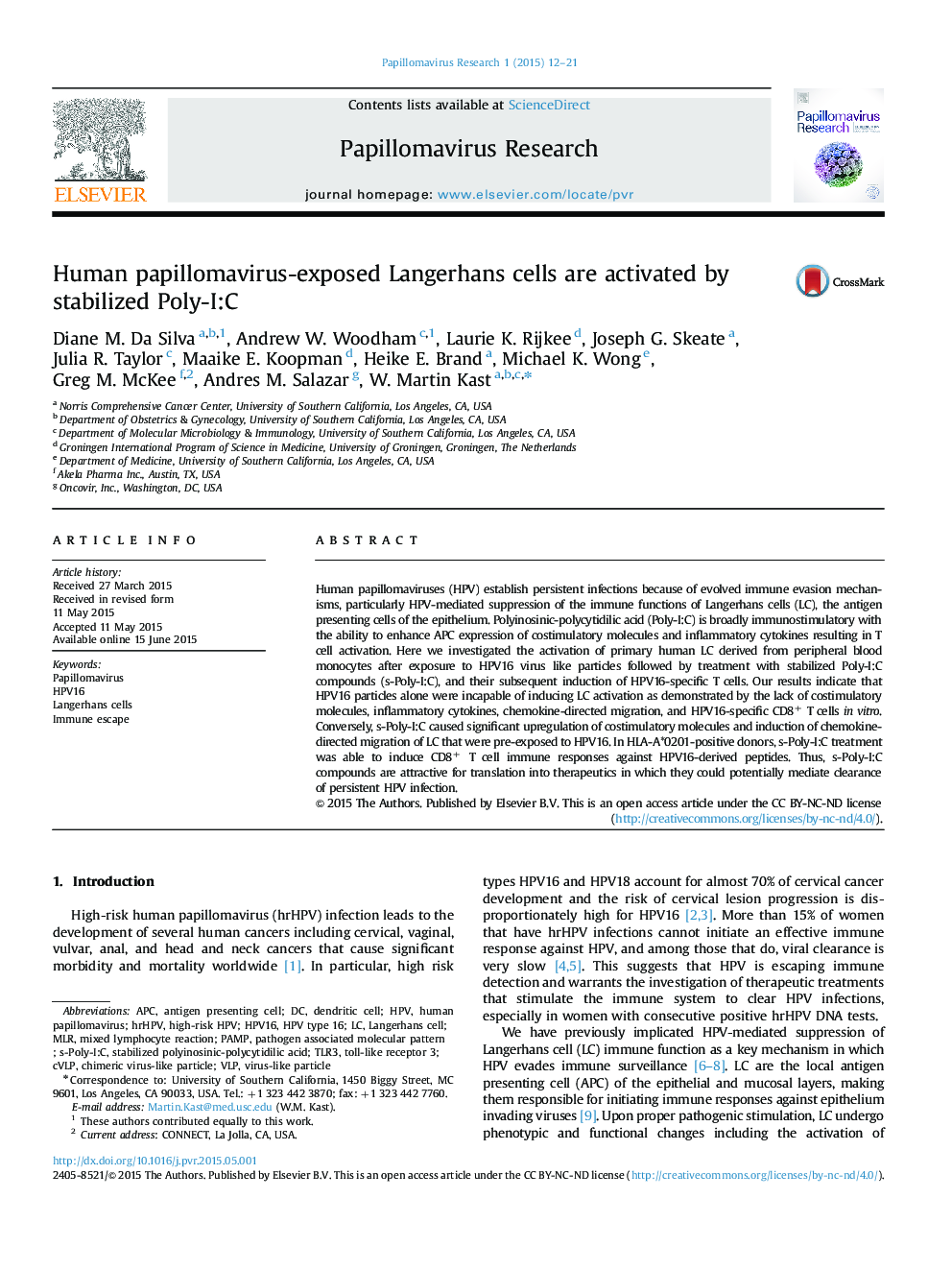| کد مقاله | کد نشریه | سال انتشار | مقاله انگلیسی | نسخه تمام متن |
|---|---|---|---|---|
| 4372308 | 1617060 | 2015 | 10 صفحه PDF | دانلود رایگان |

Human papillomaviruses (HPV) establish persistent infections because of evolved immune evasion mechanisms, particularly HPV-mediated suppression of the immune functions of Langerhans cells (LC), the antigen presenting cells of the epithelium. Polyinosinic-polycytidilic acid (Poly-I:C) is broadly immunostimulatory with the ability to enhance APC expression of costimulatory molecules and inflammatory cytokines resulting in T cell activation. Here we investigated the activation of primary human LC derived from peripheral blood monocytes after exposure to HPV16 virus like particles followed by treatment with stabilized Poly-I:C compounds (s-Poly-I:C), and their subsequent induction of HPV16-specific T cells. Our results indicate that HPV16 particles alone were incapable of inducing LC activation as demonstrated by the lack of costimulatory molecules, inflammatory cytokines, chemokine-directed migration, and HPV16-specific CD8+ T cells in vitro. Conversely, s-Poly-I:C caused significant upregulation of costimulatory molecules and induction of chemokine-directed migration of LC that were pre-exposed to HPV16. In HLA-A*0201-positive donors, s-Poly-I:C treatment was able to induce CD8+ T cell immune responses against HPV16-derived peptides. Thus, s-Poly-I:C compounds are attractive for translation into therapeutics in which they could potentially mediate clearance of persistent HPV infection.
Figure optionsDownload as PowerPoint slide
Journal: Papillomavirus Research - Volume 1, December 2015, Pages 12–21